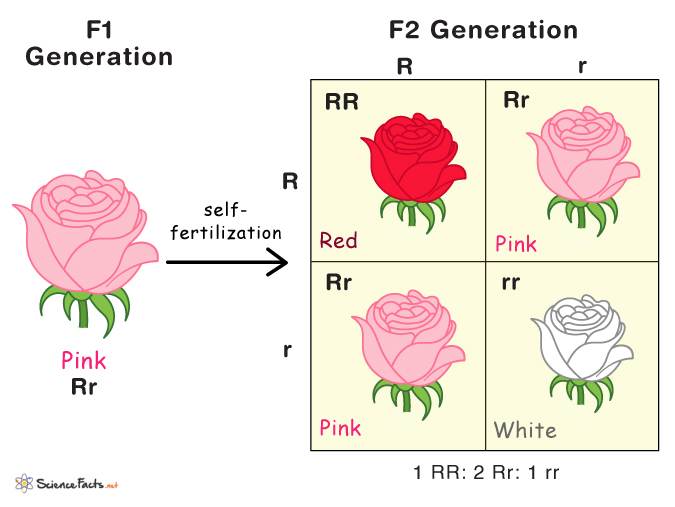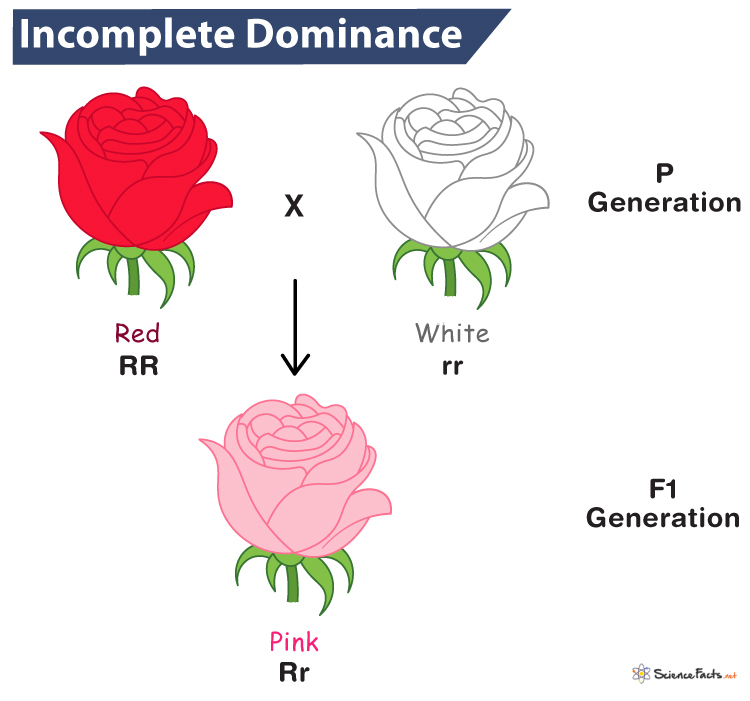Incomplete Dominance
Incomplete dominance is a type of inheritance pattern in which one allele for a trait is not completely dominant over the other allele. It is nothing but a combined expression of the two alleles in the heterozygous condition producing a blend of the two individual phenotypes. Incomplete dominance is also called partial dominance or semi-dominance.
Although not the most common form of expression, polygenic traits such as height, weight, eye color, and skin color in plants, animals, and humans display incomplete dominance.
After the discovery of the laws of inheritance by Gregor Mendel, the term incomplete dominance was proposed by the German botanist Carl Correns while studying four o’clock flowers.
Mechanism of Incomplete Dominance
Example: Snapdragon
Keeping Mendel’s work under consideration, the mechanism of incomplete dominance can be easily understood using Carl Correns’s experiment on o’clock (Snapdragon) plants. He used a true-breeding (homozygous) red flower RR with two dominant red alleles. Then, he crossed it with a true-breeding (homozygous) white flower rr with two recessive and corresponding alleles. Their F1 offspring are all heterozygous Rr, producing intermediate pink flowers Rr. This type of relationship between alleles is called incomplete dominance.
When the F1 generation plants were self-pollinated, they produced red RR, pink Rr, and white rr flowers in a ratio of 1:2:1. This genotypic ratio is the same as that of the monohybrid cross result by Mendel. However, the phenotypic ratio has changed from 3:1 to 1:2:1. The result can be explained by the incomplete dominance of the allele R over the allele r. It forms a third phenotype, a blend of the two parental phenotypes.
Incomplete Dominance Punnett Square
The botanists use the Punnett square to understand the mechanism of incomplete dominance and verify if it follows Mendel’s laws of inheritance. When we express the result of the above breeding experiment in the Punnett square, it displays incomplete dominance as shown:
Self-pollination of the F1 plants produces offspring with phenotype 1 red: 2 red/white: 1 white. Thus, alleles are still inherited according to Mendel’s laws, even when they show incomplete dominance.

Other Examples of Incomplete Dominance
In Humans
- A newborn to a parent with straight hair and a parent with curly hair always has wavy or curled hair.
- Carriers of Sickle cell anemia show incomplete dominance. The allele for sickled cells is recessive, and the alleles for normal cells are dominant. Heterozygotes are carriers but do not have the actual disease. However, they simultaneously have some sickled cells and some normal red blood cells at the same time.
- Similarly, carriers of Tay-Sachs disease show incomplete dominance. It occurs in people with two recessive alleles for the disease. People with one allele are carriers and do not show any symptoms. However, they produce half of the usual amount of the enzyme, showing an intermediate phenotype between individuals with the disorder and those having no recessive Tay-Sachs alleles.
In Animals
- Andalusian chickens show incomplete dominance in their feather color. A white-feathered male and a black-feathered female often produce blue-tinged-feathered offspring. It occurs due to a dilution of the melanin pigment.
- When long and short-furred rabbits are bred, their offspring are medium-furred.
- When bred with a dog with straight hair, a dog with curly hair produces heterozygous offspring with an intermediate wavy coat like the labradoodle.
- A long-tailed dog, when bred with a short-tailed one, offspring are medium-tailed.
- When mated with a non-spotted deer, a spotted deer produces offspring with fewer spots.
-
References
Article was last reviewed on Friday, November 18, 2022




